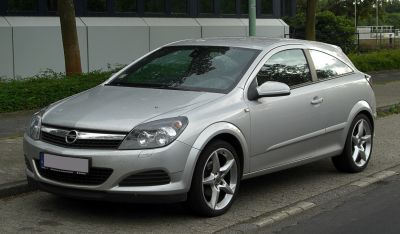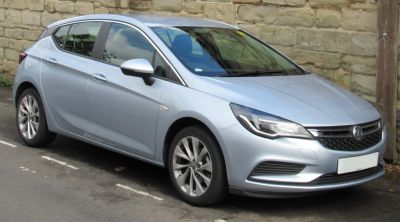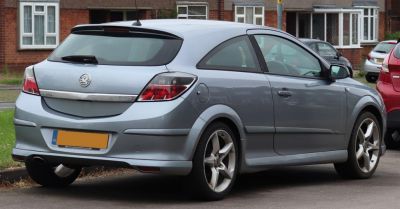 2007 Fiat Bravo II (198) Dimensions, Size & Specs
2007 Fiat Bravo II (198) Dimensions, Size & SpecsMeasurements of the 2007 Fiat Bravo II, engineered for optimal performance and comfort
| Dimensions | |
|---|---|
| Length: | 4336 mm170.7 in14.2 ft |
| Width: | 1792 mm70.6 in5.9 ft |
| Height: | 1498 mm59.0 in4.9 ft |
| Trunk Capacity: | 400 liter14.1 cu ft |
| Trunk Capacity (Max): | 1175 liter41.5 cu ft |
| Weight Specifications | |
| Curb Weight: | 1205-1360 kg2657-2998 lbs |
| Maximal permitted Weight: | 1715-1870 kg3781-4123 lbs |
| Tire Specifications | |
| Rims Sizes: | 15-inch rims:
|
| Tire Sizes: |
|
The Fiat Bravo II (198), produced between 2007 and 2014, is a compact hatchback that blends practicality with sporty styling. Measuring 4336 mm (170.7 inches) in length, 1792 mm (70.5 inches) in width, and 1498 mm (59.0 inches) in height, it fits comfortably into the compact car segment, offering a balanced footprint ideal for urban driving and maneuverability. The curb weight of the Bravo II ranges from 1205 to 1360 kg (2657 to 2998 lbs), depending on trim and equipment, supporting a maximum weight between 1715 and 1870 kg (3782 to 4123 lbs), which indicates a solid structural design and capacity for passengers and cargo. Inside, the luggage compartment offers a practical 400 liters (14.1 cubic feet) of storage space, which expands generously to 1175 liters (41.5 cubic feet) when the rear seats are folded down, enhancing versatility for carrying larger items. The Bravo II comes equipped with rim sizes of 15, 16, and 17 inches, paired with tire sizes such as 195/65 R15, 205/55 R16, and 225/45 R17, providing options that balance comfort, handling, and aesthetics. Overall, the Fiat Bravo II strikes a commendable balance between size, weight, and functionality, making it a competitive choice in the compact hatchback market during its production years.
Discover the standout features that make the 2007 Fiat Bravo II a leader in its class
Have a question? Please check our knowledgebase first.
The Fiat Bravo II (198), produced between 2007 and 2014, is a compact hatchback with a length of 4336 mm (170.7 inches), a width of 1792 mm (70.5 inches), and a height of 1498 mm (59 inches). These dimensions position the Bravo II as a moderately sized hatchback, offering a balanced footprint that's suitable for urban driving as well as comfortable enough for highway trips. The relatively wide stance at 1792 mm contributes to stable handling and increased cabin space, while the height of 1498 mm allows for a comfortable seating position typical of hatchbacks in this segment.
The curb weight of the Fiat Bravo II spans from 1205 kg to 1360 kg (2657 lbs to 2998 lbs) depending on the variant and equipment. This weight range makes the Bravo II relatively light for its class, contributing positively to its agility and fuel efficiency. A lighter vehicle typically accelerates faster, handles more responsively, and consumes less fuel compared to heavier competitors. The precise curb weight also supports decent braking performance and contributes to overall lower emissions. This broad range in curb weight allows buyers to select models that prioritize either performance or added comfort and equipment, which may add weight.
The maximum weight (gross vehicle weight) of the Fiat Bravo II ranges from 1715 kg to 1870 kg (3782 lbs to 4123 lbs). This figure includes the vehicle's curb weight plus the maximum permissible payload including passengers, cargo, and any additional equipment. The difference between curb weight and maximum weight indicates the carrying capacity, which ranges approximately from 450 kg to 600 kg (992 lbs to 1323 lbs). This capacity ensures that the Bravo II can comfortably accommodate five passengers along with luggage or additional gear without compromising safety or vehicle dynamics.
The Fiat Bravo II provides notable practicality within its compact hatchback design. With the rear seats in place, it offers a luggage capacity of 400 liters (approximately 14.1 cubic feet), enough for several medium-sized suitcases or grocery loads. When the rear seats are folded down, the luggage capacity expands substantially to 1175 liters (about 41.5 cubic feet). This expanded space significantly increases cargo flexibility, making the vehicle suitable for transporting larger items such as sports equipment, bicycles, or furniture, perfect for weekend activities or small moves.
The Fiat Bravo II supports three main rim sizes: 15, 16, and 17 inches, which correspond to tire sizes 195/65 R15, 205/55 R16, and 225/45 R17 respectively. The 15-inch rims with 195/65 tires offer a more comfortable ride due to higher profile tires absorbing road imperfections, ideal for daily commuting. The 16-inch setup balances comfort and sporty appearance with a slightly lower profile tire (205/55), offering improved handling and grip. The 17-inch rims paired with 225/45 tires provide the best handling and a sportier look, but at the expense of a firmer ride and potentially some increase in road noise and fuel consumption. These options give buyers flexibility based on driving style and preferences.
Yes, the Fiat Bravo II typically fits comfortably within a standard garage. Standard single-car garage dimensions commonly range around 2.4 to 2.7 meters (7.9 to 8.9 feet) wide and 5.5 to 6 meters (18 to 20 feet) long. With its compact size of 4336 mm (4.34 meters or 14.2 feet) in length and 1792 mm (1.79 meters or 5.9 feet) in width, the Bravo II requires less space allowing easy maneuvering inside the garage. Its height of about 1.5 meters (4.9 feet) poses no issue in terms of clearance. Therefore, typical garages can accommodate the Bravo II without difficulty, providing enough space for opening doors and walking around the vehicle.
Compared to its predecessor, the first-generation Fiat Bravo (produced mainly between 1995 and 2001), the Bravo II saw a significant increase in dimensions, reflecting modern design trends and customer demands for more space. The Bravo II's length of 4336 mm (170.7 inches) is notably longer, while its width at 1792 mm (70.5 inches) is also expanded, providing more interior room and improved road presence. The Bravo I was more compact, with a smaller footprint which suited urban commuting but offered less cabin and luggage space. The height and curb weight similarly increased in the Bravo II, contributing to enhanced safety features and comfort. Overall, the Bravo II is larger and more refined in both form and function compared to the first generation.
When compared to similar compact hatchbacks such as the Volkswagen Golf Mk5/Mk6 (contemporary to Bravo II) and the Ford Focus Mk2, the Fiat Bravo II holds its ground well in size and practicality. The Bravo II's length of 4336 mm is slightly longer than the Golf Mk6 (around 4250 mm) and comparable to the Focus Mk2 (about 4330 mm). However, the Bravo II is wider at 1792 mm compared to the Golf (about 1799 mm) and Focus (1770 mm). Its height of approximately 1498 mm is typical for the segment, offering comfortable headroom. Luggage capacity is competitive, though the Golf often leads with slightly more cargo space. Overall, the Bravo II offers a slightly more spacious footprint that balances interior space and exterior dimensions, making it a strong contender in the compact hatchback market.
The Fiat Bravo II is a 5-door hatchback, a body style known for combining practicality with compact dimensions. Hatchbacks like the Bravo II benefit from easier access to the rear cargo area thanks to the large rear hatch door, facilitating loading and unloading of bulky items. The rear seats can easily fold down to dramatically increase the cargo space, providing versatility for everyday use and leisure activities. Additionally, the hatchback design often results in better visibility for the driver and a more engaging driving experience compared to sedans or larger vehicles. This makes the Bravo II an ideal choice for urban drivers seeking efficient space utilization and flexibility.
The Fiat Bravo II’s curb weight range from 1205 kg to 1360 kg (2657 - 2998 lbs) offers a balanced chassis that supports both nimble handling and structural safety. A car in this weight class tends to have a good mix of agility and road-holding, which enhances driver confidence and control in various conditions. The weight also factors into crash safety, as the vehicle frames and crumple zones are designed considering this mass to absorb impact energy effectively. The maximum weight limit (1715 - 1870 kg or 3782 - 4123 lbs) ensures that the car can safely carry its full payload without compromising handling dynamics or braking performance. Therefore, adhering to recommended loading limits is crucial for maintaining optimal safety and performance.
Discover similar sized cars.

| Production: | 2019-2021 |
|---|---|
| Model Year: | 2020 |
| Length: | 4370 mm172.0 in |
| Width: | 2042 mm80.4 in |
| Height: | 1485 mm58.5 in |

| Production: | 2007-2010 |
|---|---|
| Model Year: | 2007 |
| Length: | 4290 mm168.9 in |
| Width: | 2033 mm80.0 in |
| Height: | 1405-1435 mm55.3-56.5 in |

| Model Year: | 2013 |
|---|---|
| Length: | 4275 mm168.3 in |
| Width: | 1760 mm69.3 in |
| Height: | 1460 mm57.5 in |

| Production: | 2011-2014 |
|---|---|
| Model Year: | 2011 |
| Length: | 4320 mm170.1 in |
| Width: | 1765 mm69.5 in |
| Height: | 1440 mm56.7 in |

| Production: | 2019-2021 |
|---|---|
| Model Year: | 2019 |
| Length: | 4370 mm172.0 in |
| Width: | 2042 mm80.4 in |
| Height: | 1485 mm58.5 in |

| Production: | 2015-2019 |
|---|---|
| Model Year: | 2015 |
| Length: | 4370 mm172.0 in |
| Width: | 2042 mm80.4 in |
| Height: | 1485 mm58.5 in |

| Production: | 2005-2010 |
|---|---|
| Model Year: | 2005 |
| Length: | 4290 mm168.9 in |
| Width: | 2033 mm80.0 in |
| Height: | 1415-1435 mm55.7-56.5 in |

| Production: | 2020-present |
|---|---|
| Model Year: | 2021 |
| Length: | 4368 mm172.0 in |
| Width: | 1792 mm70.6 in |
| Height: | 1495 mm58.9 in |
